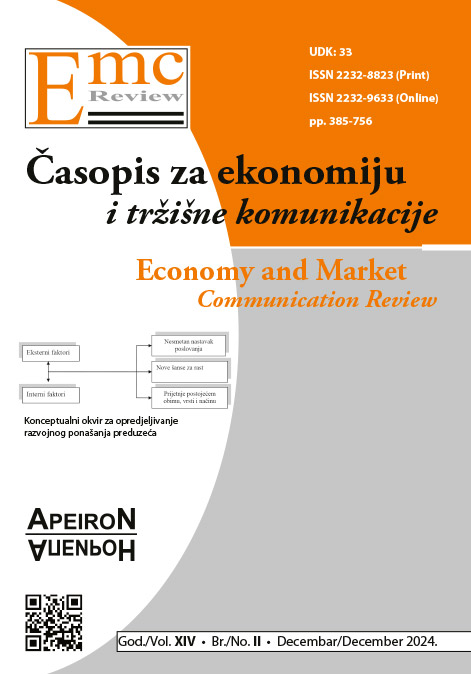APPLICATION OF THE CAMA ALGORITHM IN MASS PROPERTY VALUATION IN THE REPUBLIC OF SRPSKA
DOI:
https://doi.org/10.7251/EMC2402408SKeywords:
CAMA algorithm, mass property valuation, value zones, relational tablesAbstract
The real estate market is an integral part of the economic development of every country and contributes to promoting investments, production, increasing income, as well as socio-economic stability. Every country strives to achieve stability in the real estate market. The most important factor in the stability of the real estate market is real estate prices. Real estate prices determine the general well-being of citizens. They also affect the operations of banks (through mortgages, sales, etc.). It is extremely important to stabilize real estate prices. Only in this way is it possible to implement policies and macroeconomic measures that will make the real estate market an efficient segment of the overall socio-economic system. For all these reasons, it is very important to accurately assess real estate prices. Mass appraisal or Computer-Assisted Mass Appraisal (CAMA) are terms usually applied for the valuation of real estate for property taxation purposes. The development of computational technologies enables computer-supported methods for valuing all properties. CAMA represents a computer algorithm for the mass and individual calculation of real estate values. The use of the term Computer-Assisted Mass Appraisal techniques is defined as the systematic assessment of the value of all properties on a given date using standardized procedures and statistical testing. The CAMA algorithm consists of several components: Model specification (mathematical form of the model or valuation model); Sales prices and descriptive property data; Income and expense data and descriptive property data; Model calibration software (usually multivariate statistical methods); Calibrated models (a function of input data with established model coefficients; a mathematical expression for calculating the estimated value); Attributes (characteristics required by the appraisal model in a computer-readable form); Valuation software (software for applying the calibrated model to the characteristics of input attributes to create value estimates; creating an estimate file and generating defined reports or producible); Value estimates (file or database of value estimates). The goal of this research is to estimate the value of real estate using the mass appraisal method - the CAMA algorithm. The specificity of forming the estimated value of real estate lies in defining the market value of real estate if the prices from sales contracts entered into the Real Estate Price Register (formed based on supply and demand for apartments) are known, forming value zones (location factor), value tables (relational tables and value levels), additional influence factors (apartment location factor within a building), and an equation for estimating real estate value. The research results show that deviations between notarial contract prices and estimated values correspond to the standards applied in mass real estate value appraisal in all countries that implement them.
